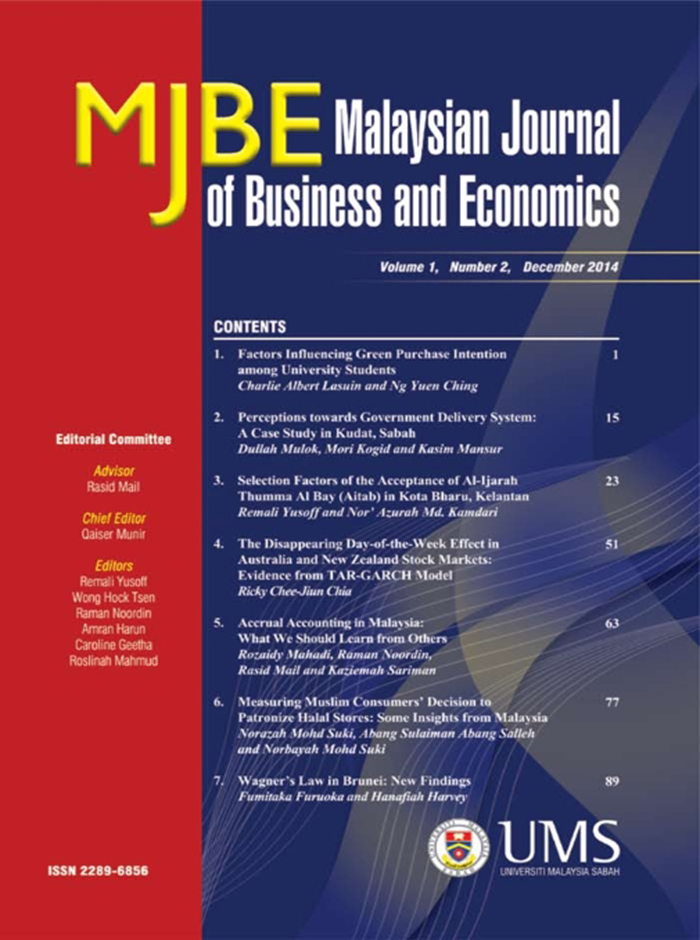The Disappearing Day-of-the-Week Effect in Australia and New Zealand Stock Markets: Evidence from TAR-GARCH Model
DOI:
https://doi.org/10.51200/mjbe.v1i2.119Keywords:
asymmetrical effect, day-of-the-week effect, TAR-GARCH modelAbstract
This study examined the existence of the daily pattern of calendar anomalies and asymmetrical behavior in Australia and New Zealand stock markets over the period 2002 to 2014. This study found disappearing of day-of-the-week effect in the return of both Australia and New Zealand stock markets. By using the TAR-GARCH model, this study uncovered that there appear asymmetrical market reaction on the positive and negative news in both of the stock markets. It is believed that the consistent of these findings have useful implications for trading strategies and investment decisions. Thus, investors should use the information to avoid and reduce the risk when investing in these markets.
Downloads
How to Cite
Issue
Section
License

CCBY (Attribution)
https://creativecommons.org/licenses/by/4.0/
© Universiti Malaysia Sabah 2025
All rights reserved. No part of this publication may be reproduced, distributed, stored in a database or retrieval system, or transmitted, in any form or by any means, electronic, mechanical, graphic, recording or otherwise, without the prior written permission of Universiti Malaysia Sabah Press, except as permitted by Act 332, Malaysian Copyright Act of 1987. Permission of rights is subjected to the journal.









